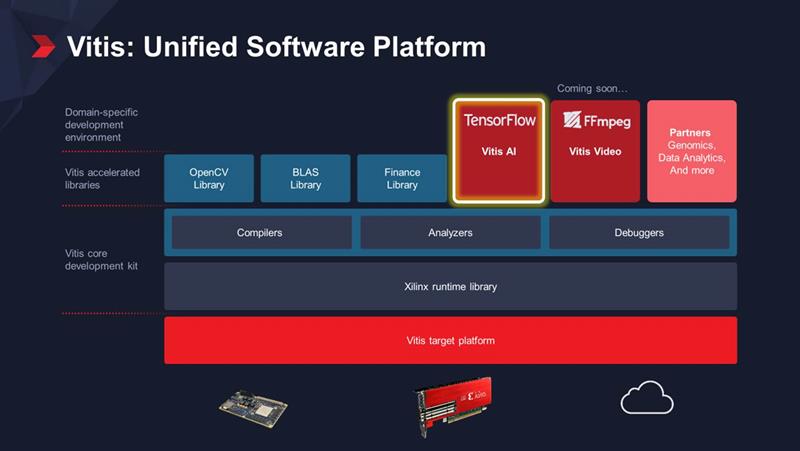The Vitis platform is able to automatically tailor the Xilinx hardware architecture to the software or algorithmic code without the need for hardware expertise and rather than imposing a proprietary development environment, it is able to plug into common software developer tools and use a rich set of optimised open source libraries, leaving developers to focus on their algorithms.
Separate to the Vivado Design Suite, which will still be supported for those who want to program using hardware code, Vitis can boost the productivity of hardware developers by packaging hardware modules as software-callable functions.
“With exponentially increasing compute needs, engineers and scientists are often limited by the fixed nature of silicon,” said Victor Peng, president and chief executive officer, Xilinx. “Vitis is a singular environment that enables programmers and engineers from all disciplines to co-develop and optimise their hardware and software, using the tools and frameworks they already know and understand. This means that they can adapt their hardware architecture to their application without the need for new silicon.”
The Vitis platform is built on a stack-based architecture that plugs into open-source standard development systems and build environments, but most importantly, it includes a rich set of standard libraries.

The base layer is the Vitis target platform, which includes a board and pre-programmed I/O. The second layer, called the Vitis core development kit, encompasses the open-source Xilinx runtime library to manage the data movement between different domains, including the subsystems, the AI Engine in the forthcoming Versal ACAP, as well as an external host, if required. This layer also includes the core development tools such as compilers, analysers and debuggers. These tools are designed to integrate seamlessly with industry-standard build systems and development environments.
In the third layer are more than 400 optimised and open-source applications across eight Vitis libraries. These include the Basic Linear Algebra Subprograms (BLAS) library, the Solver library, the Security library, the Vision library, the Data Compression library, the Quantitative Finance library, the Database library and the AI library.
These enable software developers to call pre-accelerated functions using a standard application programming interface (API).
The fourth and most important element of the platform is Vitis AI, which integrates a domain-specific architecture (DSA) that configures Xilinx hardware to be optimised and programmed using industry-leading frameworks like TensorFlow and Caffe.
Vitis AI provides the tools to optimise, compress and compile trained AI models running on a Xilinx device in about one minute. It also delivers specialised APIs for deployment from edge to cloud, all with best-in-class inference performance and efficiency.
Xilinx has announced that it will soon be releasing another DSA, called Vitis Video, to enable video encoding directly from FFmpeg for the same, ultra-simple, highly powerful end-to-end solution. DSAs available from partner companies include Illumina, which integrates with GATK for genome analysis, and BlackLynx, which integrates with ElasticSearch for big data analytics, along with proprietary DSAs that are currently being utilized by our customers.
Xilinx also announced the launch of a developer site that provides access to examples, tutorials and documentation, as well as a space to connect the Vitis developer community.It will be managed by Xilinx and Vitis experts and enthusiasts, and will provide valuable information on the latest Vitis updates, tips and tricks.
The Vitis unified software platform is free for Xilinx boards and will be available for download next month.







